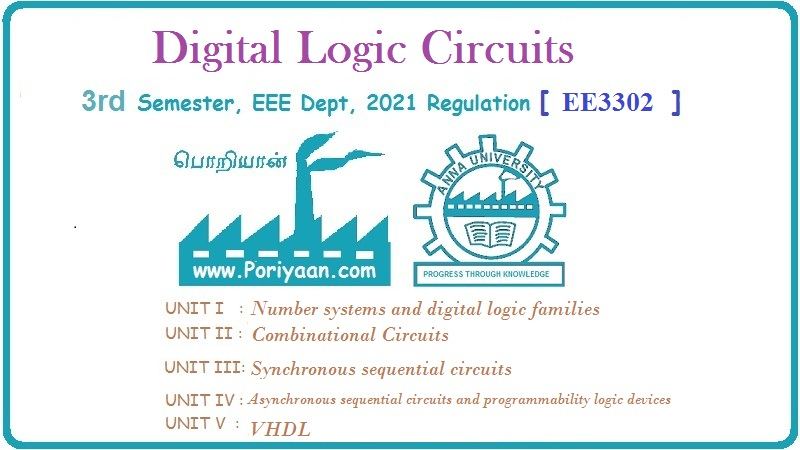Digital Logic Circuits: Unit V: VHDL
VHDL Identifiers and Types
with example
There are two types of identifiers in VHDL : • Basic identifiers • Extended identifiers
VHDL Identifiers and Types
There
are two types of identifiers in VHDL :
•
Basic identifiers
•
Extended identifiers
Basic
identifier : The base identifier in VHDL is composed
of a sequence of one or more characters. Legal characters are ;
•
Lower case letter (a ... z)
•
Upper case letter (A ... Z)
•
Digit (0 ... 9)
•
Underscore (_)
Note
1. The first character in a basic identifier must be a letter, and the last
character may not be an underscore.
2.
The characters are not case sensitive. Therefore, as an example, NUM, num and
Num are considered to be same identifier.
Examples
: Signal l, H Adder
Extended
identifier : The extended identifier in VHDL is a
sequence of characters written between two backslashes. Here, any allowable
characters can be used including characters like . , !, @, ', and $. Examples :
/COUNT/ , /- 125/ , /TTL/ /Process/
Note
1.
Extended identifiers are case sensitive. Thus Num and NUM are distinct
identifiers.
2.
Even though two blackslashes includes keyword it is a valid identifier. For
example, /process/ is distinct from keyword process.
Other
important points while representing any module in VHDL
1.
Each statement in VHDL is terminated with a semicolon (;).
2.
The name of the ports must be followed by a colon (:).
3.
The architecture body starts with the predefined word begin, followed by
statements that detail the relationship between the outputs and inputs.
4.
The comment should begin with two hyphens (“)•
5.
Leaving the blank spaces between two words or at the beginning of the line are
allowed.
6.
Leaving the blank line(s) is allowed in the module.
Review Question
1. Explain identifiers and its types with example.
Digital Logic Circuits: Unit V: VHDL : Tag: : with example - VHDL Identifiers and Types
Related Topics
Related Subjects
Digital Logic Circuits
EE3302 3rd Semester EEE Dept | 2021 Regulation | 3rd Semester EEE Dept 2021 Regulation
